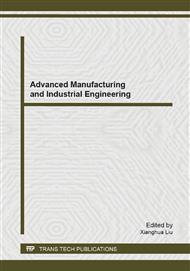p.227
p.231
p.235
p.239
p.245
p.249
p.253
p.259
p.265
Robust Design for Steering Mechanism by Using Points of Monomial Cubature Rules
Abstract:
Steering mechanism is an important part of car driving system and the lock force is a key parameter to protect driver in the case of a frontal impact. But it is difficult to predict the range of lock force during impact since the material properties and friction of the system are variable in a certain range. Based on polynomial chaos expansion (PCE) and monomial cubature rules (MCRs), an efficient robust design method is presented to predict the lock force of a steering mechanism and select appropriate parameters for structure design. The advantage of the method is to reduce the intensive computational demand of uncertainty propagation by construction of PCE using points of MCRs, and the accuracy is enough for engineering problems.
Info:
Periodical:
Pages:
245-248
Citation:
Online since:
August 2014
Authors:
Price:
Сopyright:
© 2014 Trans Tech Publications Ltd. All Rights Reserved
Share:
Citation:


